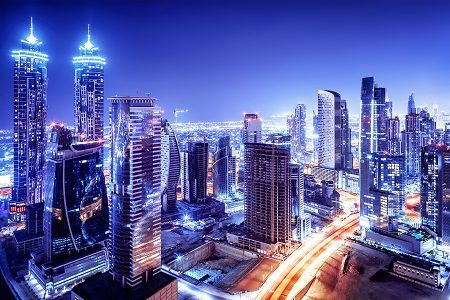The UAE is leaping into the realm of smart cities and adopting integrated security measures that protect infrastructure, homes, transportation and people
The dream of the United Arab Emirates (UAE) to develop smart cities stemmed from the government’s Vision 2021, an ambitious plan to make the UAE amongst the best countries in the world. By building smart cities, the UAE would clear the path to achieve one of Vision 2021’s six national priorities: that of a sustainable environment and infrastructure. By creating a smart city, the UAE can ensure continuity and fluidity between public safety, transportation, infrastructure, security and building technology. By creating a seamless urban environment security resilience is easier to maintain.
What is ‘smart’?
There are a number of definitions of what makes a city ‘smart,’ for example, IBM defines a smart city as “one that makes optimal use of all the interconnected information available today to better understand and control its operations and optimise the use of limited resources.”
However, in short, a smart city uses a framework of information and communication technologies to create, deploy and promote development practices to address urban challenges and create a joined-up, technologically-enabled and sustainable infrastructure.
Smart cities use a variety of software, user interfaces and communication networks alongside the Internet of Things (IoT) to deliver connected solutions for the public. Of these, the IoT is the most important. The IoT is a network of connected devices that communicate and exchange data. This can include anything from vehicles to home appliances and on-street sensors. Data collected from these devices is stored in the cloud or on servers to allow for improvements to be made to both public and private sector efficiencies and deliver economic benefits and improvements to the lives of citizens.
Many of the IoT devices use edge computing, which ensures that only the most relevant and important data is delivered over the communication network. In addition, a security system is implemented to protect, monitor and control the transmission of data from the smart city network and prevent unauthorised access to the IoT network of the city’s data platform.
Alongside the IoT solutions, smart cities also use technologies including:
- Application Programming Interfaces (APIs)
- Artificial Intelligence (AI)
- Cloud Computing Services
- Dashboards
- Machine Learning
- Machine-to-Machine Communications
- Mesh Networks
ITU defines a smart sustainable city as “an innovative city that uses information and communication technologies (ICTs) and other means to improve quality of life, efficiency of urban operation and services, and competitiveness, while ensuring that it meets the needs of present and future generations with respect to economic, social and environmental as well as cultural aspects.” This definition is very well reflected in the smart city plans and projects of the UAE.
To read the full article see our December-January issue available in the new year.
Media contact
Rebecca Morpeth Spayne,
Editor, Security Portfolio
Tel: +44 (0) 1622 823 922
Email: editor@securitybuyer.com













